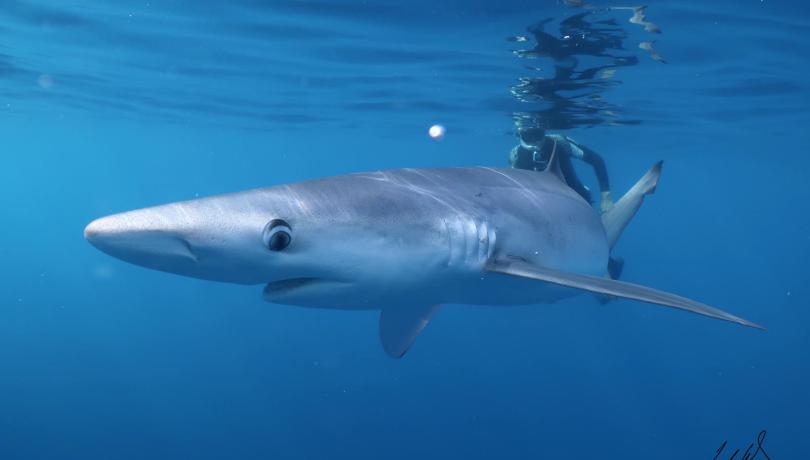The initiative, led by ICM-CSIC, aims to make fishing activity compatible with the conservation of elasmobranchs, which are highly threatened in the Mediterranean.

At the end of July, the COTI project began, seeking to harmonize fishing activity with shark conservation in the Mediterranean by identifying ecologically important areas in the northwestern part of the basin. The initiative, led by the Institute of Marine Sciences (ICM-CSIC) in collaboration with the Generalitat of Catalonia, the National Museum of Natural Sciences (MNCN-CSIC) in Madrid, and the Fundació Zoo de Barcelona. This project has been developed in collaboration with the Fundación Biodiversidad of the Ministerio para la Transición Ecológica y el Reto Demográfico, through the Programa Pleamar. It is co-financed by the European Union through the FEMPA (European Maritime, Fisheries and Aquaculture Funds).
Specifically, the project aims to develop adaptive management measures, such as designing fishing management areas based on the presence of these shark species throughout the year, to reduce the high rates of unnatural mortality associated with fishing. According to the scientific team, these measures "are key to combating the extinction threat faced by these iconic predators, which are essential for maintaining the health of marine ecosystems."
Identification of protected areas
COTI will focus on identifying protected areas using electronic tracking tags and species distribution models, as well as determining the diversity and genetic flow of species such as the blue shark (Prionace glauca), the shortfin mako (Isurus oxyrinchus), or the thresher shark (Alopias vulpinus). It will also assess fishing efforts and collaborate with commercial and recreational fishing associations and management bodies to reduce the accidental mortality of sharks.
The project's ultimate goal is to propose priority conservation areas for elasmobranchs while minimizing socioeconomic impact:
"We are going to develop a series of monitoring actions for these species in direct collaboration with the fishing sector and public administrations to identify the most important protected areas that will allow us to reduce unnatural mortality of these iconic, threatened predators," says Joan Navarro (ICM-CSIC), the project's principal investigator.
In this regard, Pablo Cermeño, from the Fundació Zoo de Barcelona, stresses that ‘collaboration between management bodies with the commercial sector and recreational fishing is key to reducing accidental mortality of sharks".
In turn, Sergi Taboada, from the MNCN-CSIC, emphasises the genomic approach of the project, which he believes "is one of the most innovative and cutting-edge aspects of COTI and will allow us to understand the general patterns of genetic connectivity and adaptation to the habitat of the species under study".
Iconic Mediterranean species
Sharks and rays, top predators in marine ecosystems, are extremely sensitive to human impacts, especially commercial and accidental fishing. Their reduction or disappearance has a cascading effect on food chains and alters the composition and functioning of the ecosystem in the long term. Therefore, according to the scientific team, improving the management and conservation of elasmobranch populations is "a real need at the global, regional, and local levels."
In the Mediterranean, a hotspot for shark and ray diversity, the conservation status of these species is critical, with accidental fishing being the main cause of high unnatural mortality. Moreover, these animals share habitats with commercially valuable species such as swordfish and tuna, increasing the likelihood of fatal accidental encounters with fishing gear.
Plan of action
First, the team will describe the spatial distribution of various species of pelagic sharks using electronic tracking tags and spatial distribution models. This will make it possible to identify priority conservation areas with minimal socioeconomic impact, which is essential to ensure the effectiveness of these measures, as it allows both fishing and elasmobranch conservation to coexist.
All this knowledge will be disseminated and transferred to fishing sector professionals, management bodies, and the general public through outreach activities and participatory processes with fishing guilds and associations:
"COTI aims to be an advisory tool for management aimed at recovering and conserving pelagic predators in the Mediterranean basin, while also improving the viability and sustainability of fishing activity," conclude Francisco Ramírez and Elena Fernández-Corredor (ICM-CSIC), that also participate in the project.